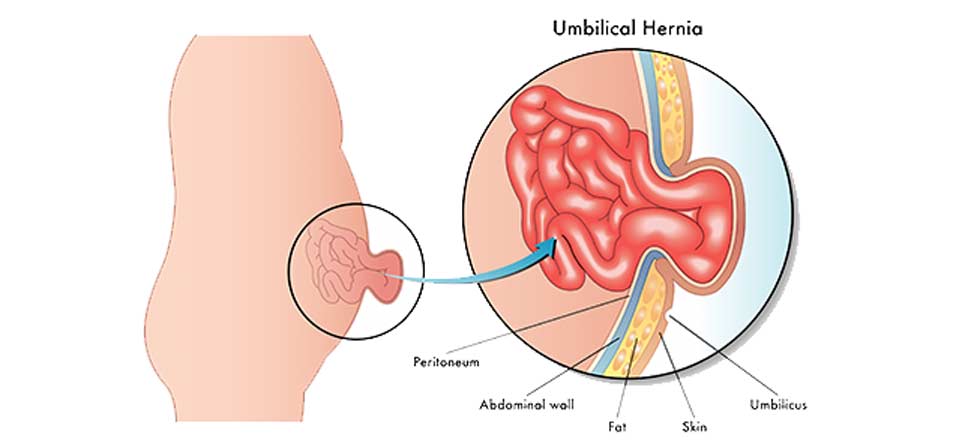
Hernias are spots where either an organ or other internal tissue pushes through a weak point in surrounding structures.
There are many different types of hernia that can occur depending on where the protrusion occurs. Umbilical hernias are characterized by a portion of the patient’s intestine pushing through their navel where their umbilical cord passed through.
These occur most often in infants and children, but it is possible for an umbilical hernia to present in adulthood.
CONTACT US TODAY
What Causes Them?
As with most types of hernias, it isn’t always possible for physicians to confirm what caused an umbilical hernia. However, umbilical hernias are almost always caused by a problem during development. While the fetus is in the womb, there is a gap in the abdominal muscles that allows the umbilical cord to pass through. This gap usually closes itself in the first couple of weeks of life, but it can fail to do so. When the abdominal muscles fail to close, it creates a weak point that can allow the intestines to protrude through. Adult cases often come with less certainty about the cause, but there are certain things that can increase the risk of an umbilical hernia in adults. These include certain abdominal surgeries and abdominal conditions, such as excess fluid. The risk of experiencing an umbilical hernia also increases with each pregnancy that a woman has, which does mean that this particular type of hernia is more common in women. Obesity is another factor that has been associated with umbilical hernia risk.

What Are The Symptoms?
It is fairly common for patients with umbilical hernias to not have symptoms that they are aware of. The first symptom that patients tend to notice is the lump in the navel area. These can vary in size and can be noticeable only during certain activities, such as coughing, that involve abdominal strain. These lumps can be tender or cause discomfort, especially in adults. If those are the only symptoms that the patient is experiencing, it is likely that no medical treatment will be necessary. However, these hernias may require immediate medical attention if they become strangulated or incarcerated. Incarcerated hernias are hernias in which the lump has become stuck out causing the blood flow to be limited and strangulated hernias occur when the blood flow is entirely cut off, which can lead to tissue death. If either of these complications occurs, then the patient will likely experience nausea, pain, discoloration, or swelling around the lump.
How Are They Treated?
If an umbilical hernia requires treatment, the treatment will be either open or laparoscopic surgery. Both of these procedures allow the surgeon to reposition the lump using either sutures or surgical mesh. Laparoscopic surgery is performed through several very small incisions and is associated with less infection risk and a shorter recovery period. However, this surgery may not be the best choice for all hernia repairs depending on their size and location.


